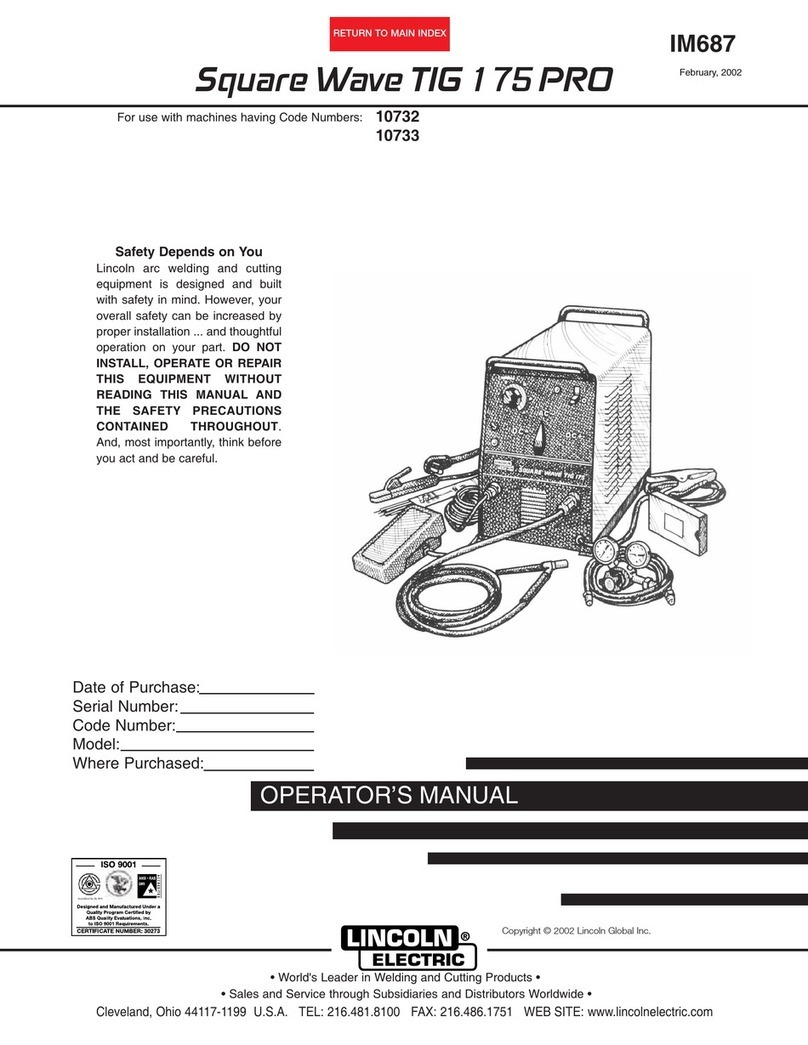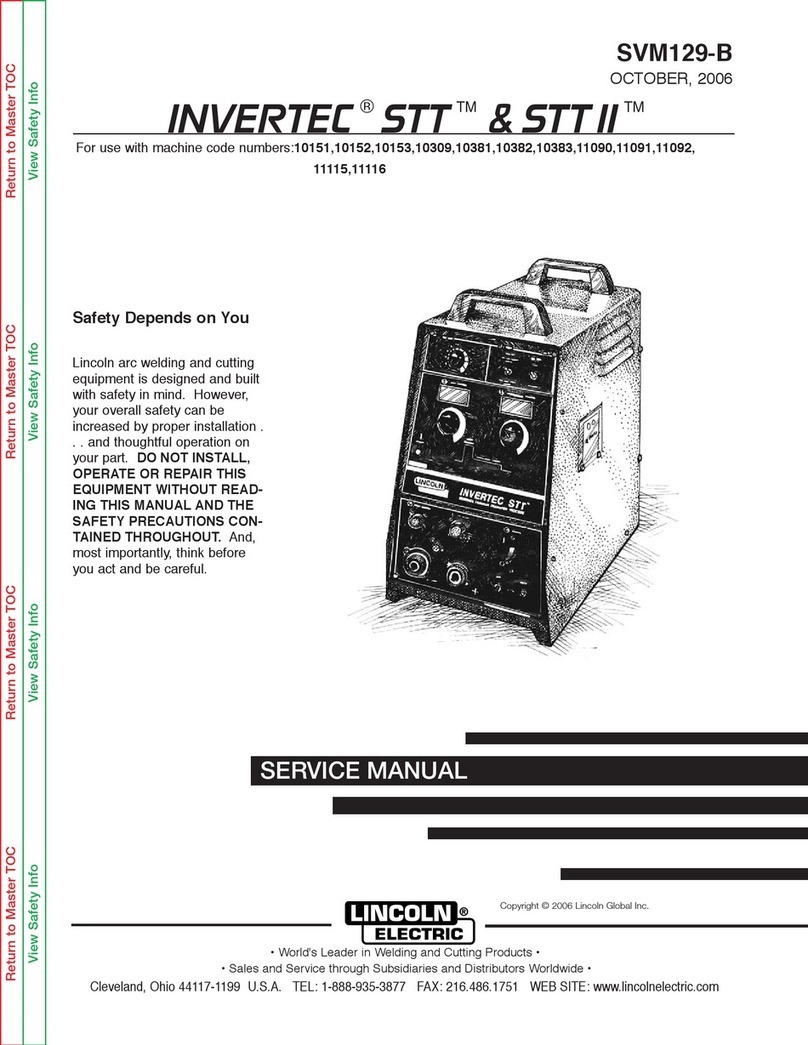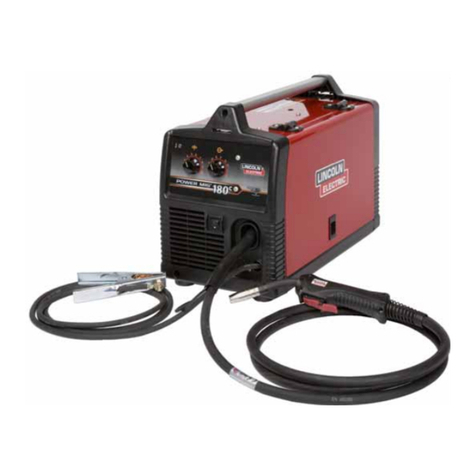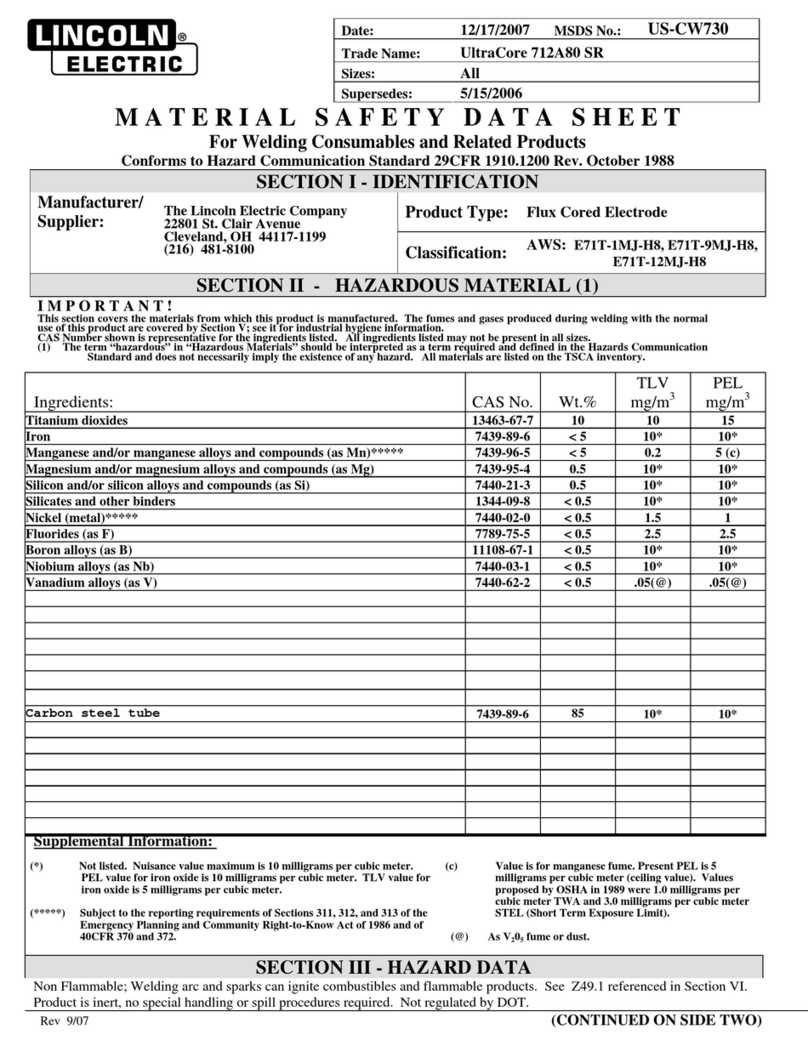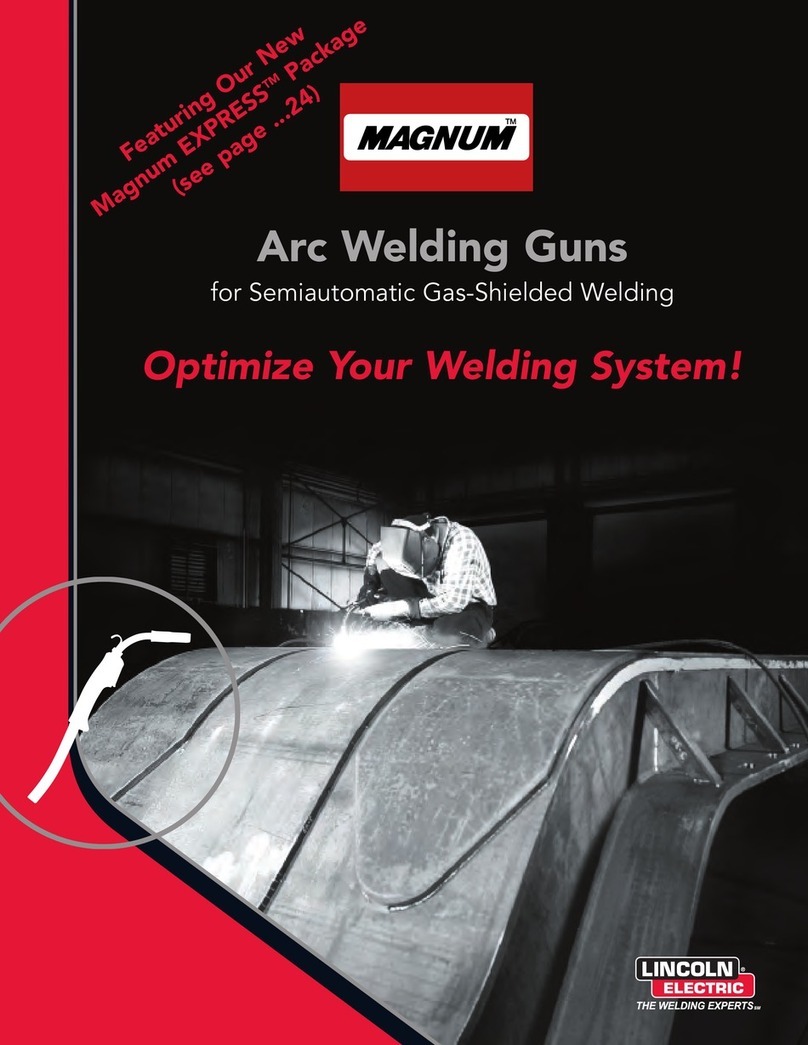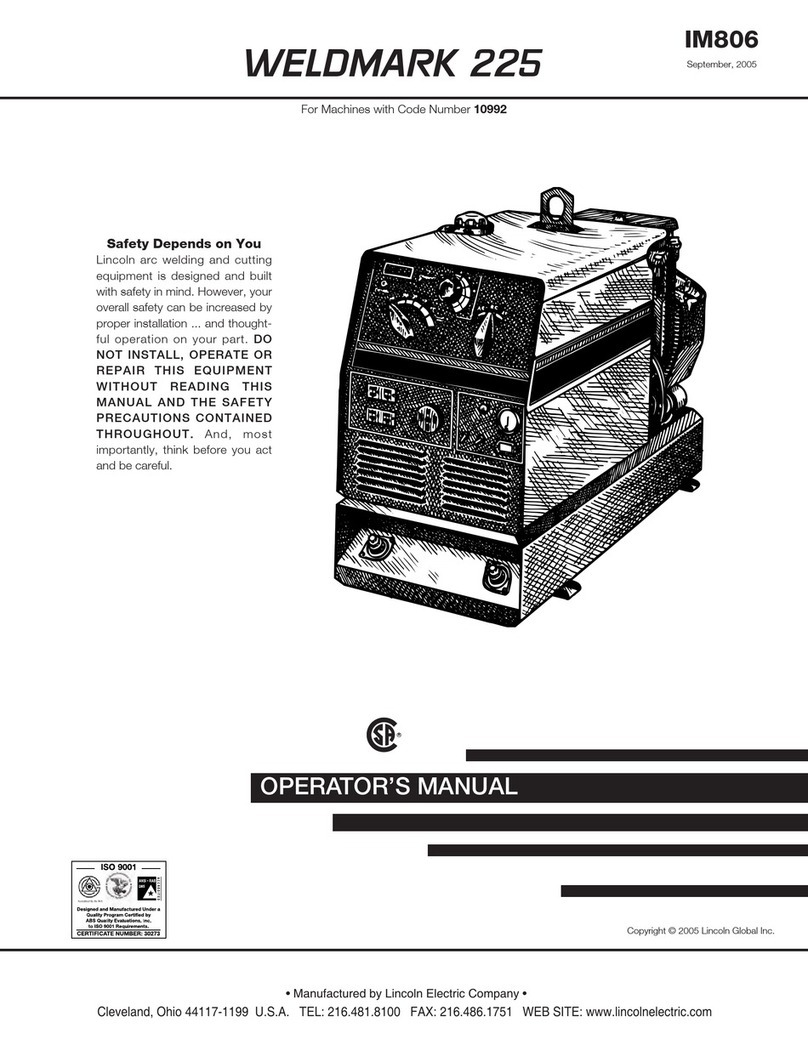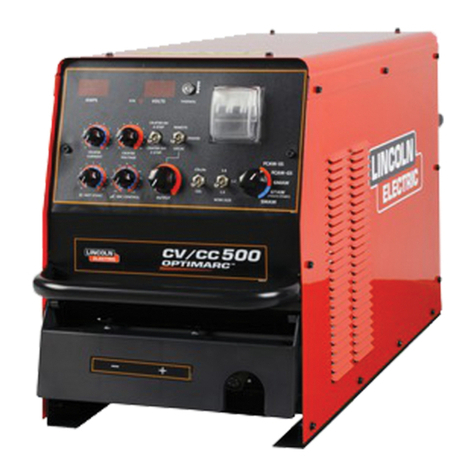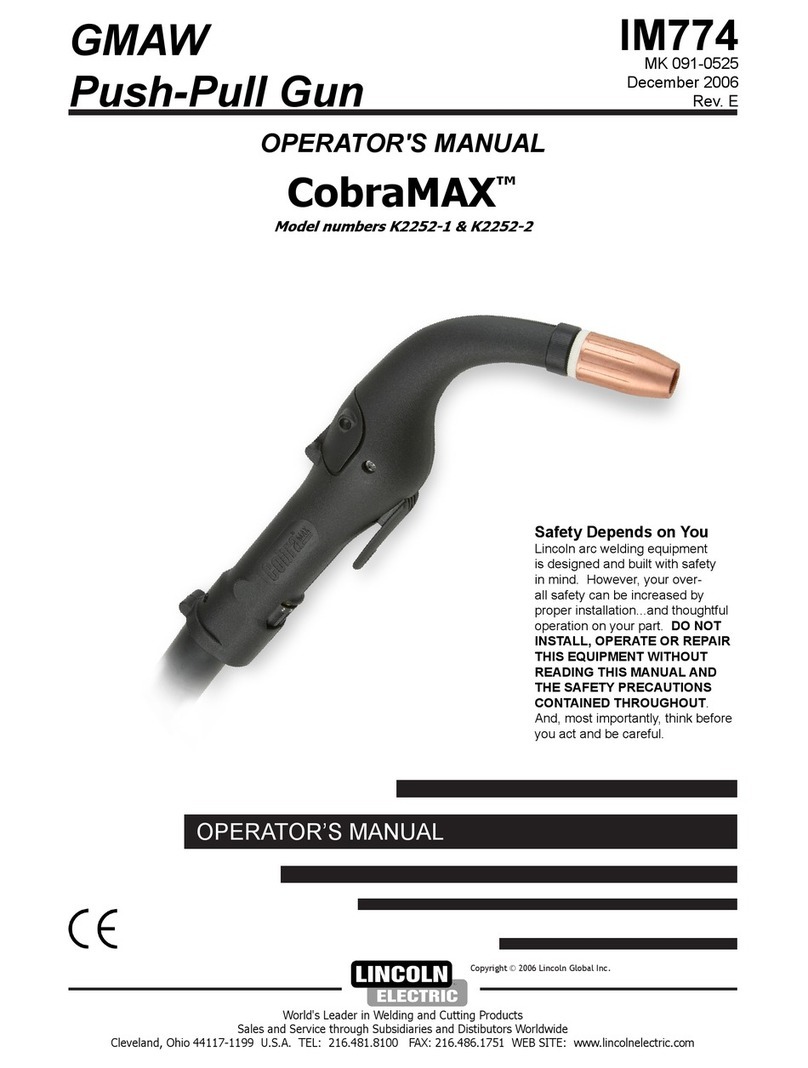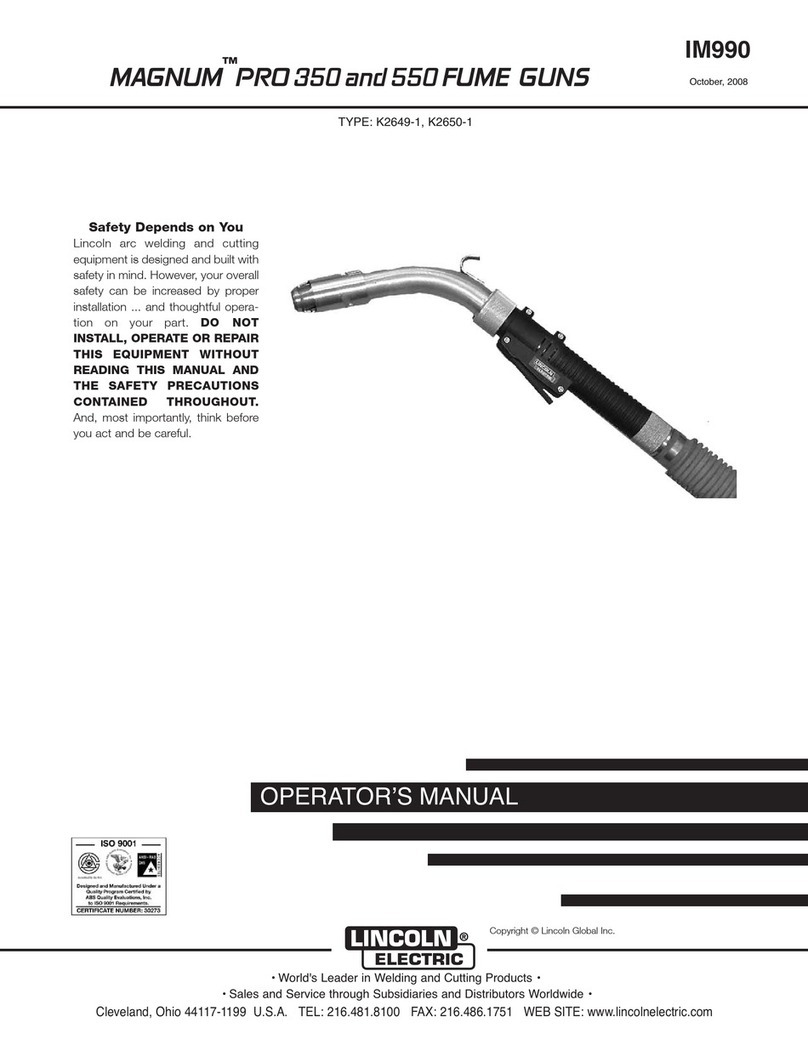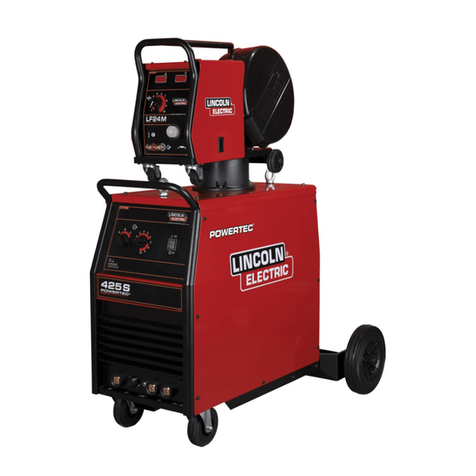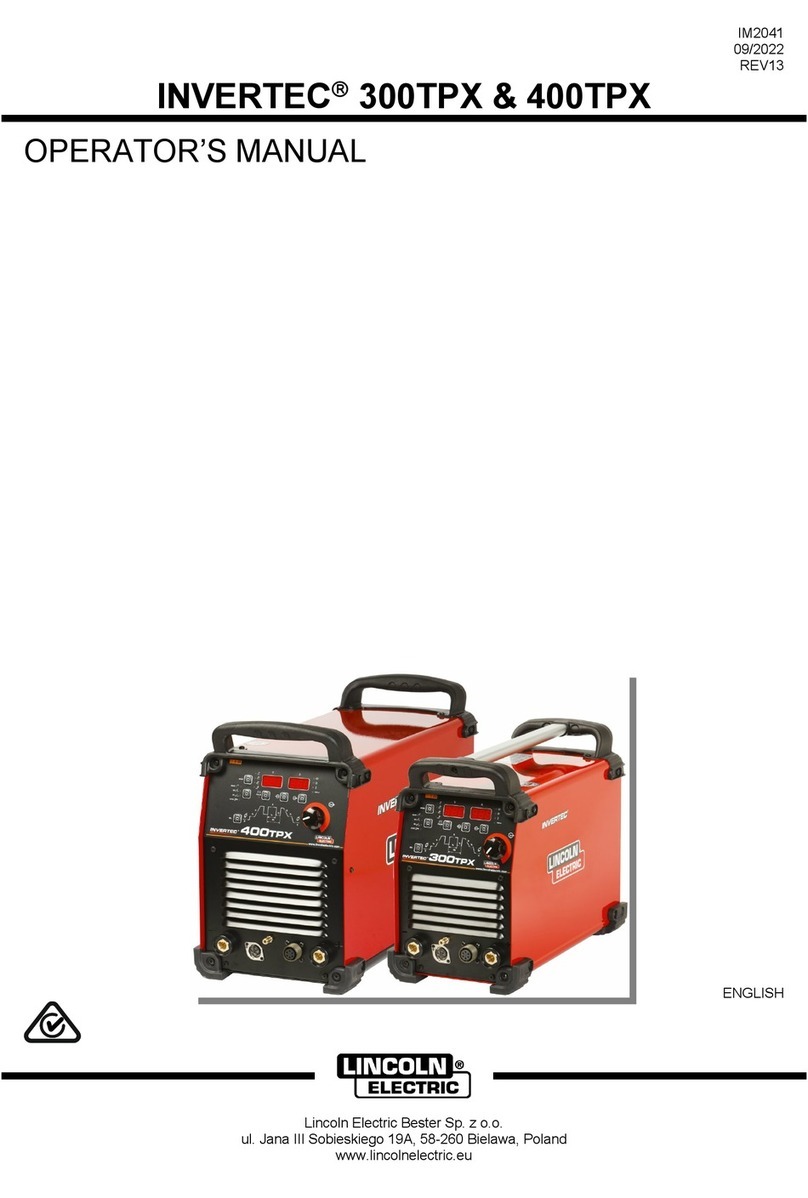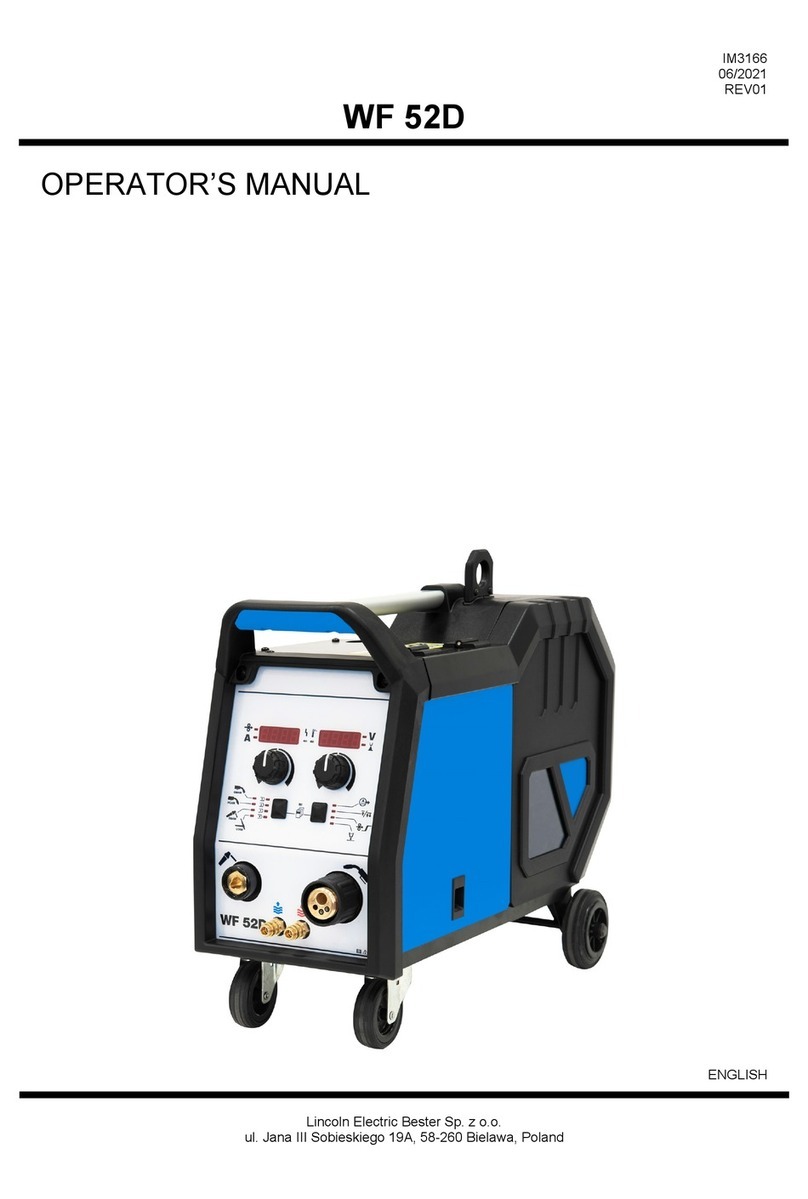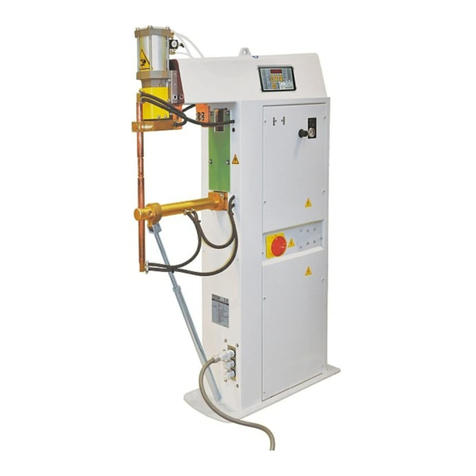
ARC WELDIN CAN BE HAZARDOUS. PROTECT YOUR-
SELF AND OTHERS FROM POSSIBLE SERIOUS INJURY
OR DEATH. KEEP CHILDREN AWAY. PACEMAKER WEAR-
ERS SHOULD CONSULT WITH THEIR DOCTOR BEFORE
OPERATIN .
Read and understand the following safety highlights. For
additional safety information, it is strongly recommended
that you purchase a copy of “Safety in Welding & utting -
ANSI Standard Z49.1”
BE SURE THAT ALL INSTALLATION, OPERA-
TION, MAINTENANCE AND REPAIR PROCE-
DURES ARE PERFORMED ONLY BY QUALIFIED
INDIVIDUALS.
WARNIN
ARC RAYS can burn.
2.a. Use a shield with the proper filter and
cover plates to protect your eyes from
sparks and the rays of the arc when
welding or observing open arc weld-
ing. Headshield and filter lens should
conform to ANSI Z87. I standards.
2.b. Use suitable clothing made from durable flame-resis-
tant material to protect your skin and that of your
helpers from the arc rays.
2.c. Protect other nearby personnel with suitable, non-
flammable screening and/or warn them not to watch
the arc nor expose themselves to the arc rays or to
hot spatter or metal.
FOR ELECTRICALLY
powered equipment.
1.a. Turn off input power using the discon-
nect switch at the fuse box before
working on the equipment.
1.b. Install equipment in accordance with the U.S.
National Electrical ode, all local codes and the man-
ufacturer’s recommendations.
1.c. Ground the equipment in accordance with the U.S.
National Electrical ode and the manufacturer’s rec-
ommendations.
SAFETY
MAR95
SAFETY
WELDIN SPARKS can
cause fire or explosion.
4.a.
Remove fire hazards from the welding
area.
If this is not possible, cover them
to prevent the welding sparks from
starting a fire. Remember that welding
sparks and hot materials from welding
can easily go through small cracks and
openings to adjacent areas. Avoid
welding near hydraulic lines. Have a
fire extinguisher readily available.
4.b. Where compressed gases are to be used at the job
site, special precautions should be used to prevent
hazardous situations. Refer to “Safety in Welding and
utting” (ANSI Standard Z49.1) and the operating
information for the equipment being used.
4.c. When not welding, make certain no part of the elec-
trode circuit is touching the work or ground.Accidental
contact can cause overheating and create a fire haz-
ard.
4.d. Do not heat, cut or weld tanks, drums or containers
until the
proper steps have been taken to insure that
such procedures
will not cause flammable or toxic
vapors from substances inside. They can cause an
explosion even
though
they have been “cleaned”. For
information, purchase “Recommended Safe Practices
for the
Preparation
for Welding and utting of
ontainers and Piping That Have Held Hazardous
Substances”, AWS F4.1 from the American Welding
Society (see address above).
4.e. Vent hollow castings or containers before heating,
cutting or welding. They may explode.
4.f.
Sparks and spatter are thrown from the welding arc.
Wear oil
free protective garments such as leather
gloves, heavy shirt, cuffless trousers, high shoes and
a cap over your hair. Wear ear plugs when welding
out of position or in confined places. Always wear
safety glasses with side shields when in a welding
area.
4.g. onnect the work cable to the work as close to the
welding area as practical. Work cables connected to
the building framework or other locations away from
the welding area increase the possibility of the weld-
ing current passing through lifting chains, crane
cables or other alternate circuits. This can create fire
hazards or overheat lifting chains or cables until they
fail.
4.h. Read and follow NFPA 51B “ Standard for Fire
Prevention During Welding, utting and Other Hot
Work”, available from NFPA,1 Batterymarch Park,PO
box 9101, Quincy, Ma 022690-9101.
4.i. Do not use a welding power source for pipe thawing.
SAFETY
WELDIN SPARKS can
cause fire or explosion.
4.a.
Remove fire hazards from the welding
area.
If this is not possible, cover them
to prevent the welding sparks from
starting a fire. Remember that welding
sparks and hot materials from welding
can easily go through small cracks and
openings to adjacent areas. Avoid
welding near hydraulic lines. Have a
fire extinguisher readily available.
4.b. Where compressed gases are to be used at the job
site, special precautions should be used to prevent
hazardous situations. Refer to “Safety in Welding and
utting” (ANSI Standard Z49.1) and the operating
information for the equipment being used.
4.c. When not welding, make certain no part of the elec-
trode circuit is touching the work or ground.Accidental
contact can cause overheating and create a fire haz-
ard.
4.d. Do not heat, cut or weld tanks, drums or containers
until the
proper steps have been taken to insure that
such procedures
will not cause flammable or toxic
vapors from substances inside. They can cause an
explosion even
though
they have been “cleaned”. For
information, purchase “Recommended Safe Practices
for the
Preparation
for Welding and utting of
ontainers and Piping That Have Held Hazardous
Substances”, AWS F4.1 from the American Welding
Society (see address above).
4.e. Vent hollow castings or containers before heating,
cutting or welding. They may explode.
4.f.
Sparks and spatter are thrown from the welding arc.
Wear oil
free protective garments such as leather
gloves, heavy shirt, cuffless trousers, high shoes and
a cap over your hair. Wear ear plugs when welding
out of position or in confined places. Always wear
safety glasses with side shields when in a welding
area.
4.g. onnect the work cable to the work as close to the
welding area as practical. Work cables connected to
the building framework or other locations away from
the welding area increase the possibility of the weld-
ing current passing through lifting chains, crane
cables or other alternate circuits. This can create fire
hazards or overheat lifting chains or cables until they
fail.
4.h. Read and follow NFPA 51B “ Standard for Fire
Prevention During Welding, utting and Other Hot
Work”, available from NFPA,1 Batterymarch Park,PO
box 9101, Quincy, Ma 022690-9101.
4.i. Do not use a welding power source for pipe thawing.
SAFETY
WELDIN SPARKS can
cause fire or explosion.
4.a.
Remove fire hazards from the welding
area.
If this is not possible, cover them
to prevent the welding sparks from
starting a fire. Remember that welding
sparks and hot materials from welding
can easily go through small cracks and
openings to adjacent areas. Avoid
welding near hydraulic lines. Have a
fire extinguisher readily available.
4.b. Where compressed gases are to be used at the job
site, special precautions should be used to prevent
hazardous situations. Refer to “Safety in Welding and
utting” (ANSI Standard Z49.1) and the operating
information for the equipment being used.
4.c. When not welding, make certain no part of the elec-
trode circuit is touching the work or ground.Accidental
contact can cause overheating and create a fire haz-
ard.
4.d. Do not heat, cut or weld tanks, drums or containers
until the
proper steps have been taken to insure that
such procedures
will not cause flammable or toxic
vapors from substances inside. They can cause an
explosion even
though
they have been “cleaned”. For
information, purchase “Recommended Safe Practices
for the
Preparation
for Welding and utting of
ontainers and Piping That Have Held Hazardous
Substances”, AWS F4.1 from the American Welding
Society (see address above).
4.e. Vent hollow castings or containers before heating,
cutting or welding. They may explode.
4.f.
Sparks and spatter are thrown from the welding arc.
Wear oil
free protective garments such as leather
gloves, heavy shirt, cuffless trousers, high shoes and
a cap over your hair. Wear ear plugs when welding
out of position or in confined places. Always wear
safety glasses with side shields when in a welding
area.
4.g. onnect the work cable to the work as close to the
welding area as practical. Work cables connected to
the building framework or other locations away from
the welding area increase the possibility of the weld-
ing current passing through lifting chains, crane
cables or other alternate circuits. This can create fire
hazards or overheat lifting chains or cables until they
fail.
4.h. Read and follow NFPA 51B “ Standard for Fire
Prevention During Welding, utting and Other Hot
Work”, available from NFPA,1 Batterymarch Park,PO
box 9101, Quincy, Ma 022690-9101.
4.i. Do not use a welding power source for pipe thawing.
SAFETY
WELDIN SPARKS can
cause fire or explosion.
4.a.
Remove fire hazards from the welding
area.
If this is not possible, cover them
to prevent the welding sparks from
starting a fire. Remember that welding
sparks and hot materials from welding
can easily go through small cracks and
openings to adjacent areas. Avoid
welding near hydraulic lines. Have a
fire extinguisher readily available.
4.b. Where compressed gases are to be used at the job
site, special precautions should be used to prevent
hazardous situations. Refer to “Safety in Welding and
utting” (ANSI Standard Z49.1) and the operating
information for the equipment being used.
4.c. When not welding, make certain no part of the elec-
trode circuit is touching the work or ground.Accidental
contact can cause overheating and create a fire haz-
ard.
4.d. Do not heat, cut or weld tanks, drums or containers
until the
proper steps have been taken to insure that
such procedures
will not cause flammable or toxic
vapors from substances inside. They can cause an
explosion even
though
they have been “cleaned”. For
information, purchase “Recommended Safe Practices
for the
Preparation
for Welding and utting of
ontainers and Piping That Have Held Hazardous
Substances”, AWS F4.1 from the American Welding
Society (see address above).
4.e. Vent hollow castings or containers before heating,
cutting or welding. They may explode.
4.f.
Sparks and spatter are thrown from the welding arc.
Wear oil
free protective garments such as leather
gloves, heavy shirt, cuffless trousers, high shoes and
a cap over your hair. Wear ear plugs when welding
out of position or in confined places. Always wear
safety glasses with side shields when in a welding
area.
4.g. onnect the work cable to the work as close to the
welding area as practical. Work cables connected to
the building framework or other locations away from
the welding area increase the possibility of the weld-
ing current passing through lifting chains, crane
cables or other alternate circuits. This can create fire
hazards or overheat lifting chains or cables until they
fail.
4.h. Read and follow NFPA 51B “ Standard for Fire
Prevention During Welding, utting and Other Hot
Work”, available from NFPA,1 Batterymarch Park,PO
box 9101, Quincy, Ma 022690-9101.
4.i. Do not use a welding power source for pipe thawing.
SAFETY
WELDIN SPARKS can
cause fire or explosion.
4.a.
Remove fire hazards from the welding
area.
If this is not possible, cover them
to prevent the welding sparks from
starting a fire. Remember that welding
sparks and hot materials from welding
can easily go through small cracks and
openings to adjacent areas. Avoid
welding near hydraulic lines. Have a
fire extinguisher readily available.
4.b. Where compressed gases are to be used at the job
site, special precautions should be used to prevent
hazardous situations. Refer to “Safety in Welding and
utting” (ANSI Standard Z49.1) and the operating
information for the equipment being used.
4.c. When not welding, make certain no part of the elec-
trode circuit is touching the work or ground.Accidental
contact can cause overheating and create a fire haz-
ard.
4.d. Do not heat, cut or weld tanks, drums or containers
until the
proper steps have been taken to insure that
such procedures
will not cause flammable or toxic
vapors from substances inside. They can cause an
explosion even
though
they have been “cleaned”. For
information, purchase “Recommended Safe Practices
for the
Preparation
for Welding and utting of
ontainers and Piping That Have Held Hazardous
Substances”, AWS F4.1 from the American Welding
Society (see address above).
4.e. Vent hollow castings or containers before heating,
cutting or welding. They may explode.
4.f.
Sparks and spatter are thrown from the welding arc.
Wear oil
free protective garments such as leather
gloves, heavy shirt, cuffless trousers, high shoes and
a cap over your hair. Wear ear plugs when welding
out of position or in confined places. Always wear
safety glasses with side shields when in a welding
area.
4.g. onnect the work cable to the work as close to the
welding area as practical. Work cables connected to
the building framework or other locations away from
the welding area increase the possibility of the weld-
ing current passing through lifting chains, crane
cables or other alternate circuits. This can create fire
hazards or overheat lifting chains or cables until they
fail.
4.h. Read and follow NFPA 51B “ Standard for Fire
Prevention During Welding, utting and Other Hot
Work”, available from NFPA,1 Batterymarch Park,PO
box 9101, Quincy, Ma 022690-9101.
4.i. Do not use a welding power source for pipe thawing.
